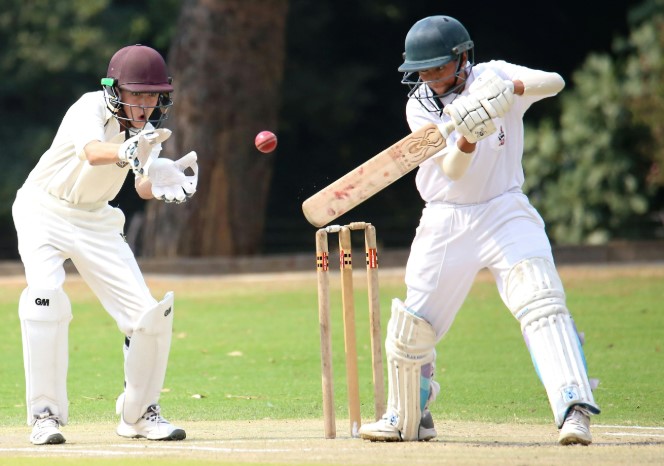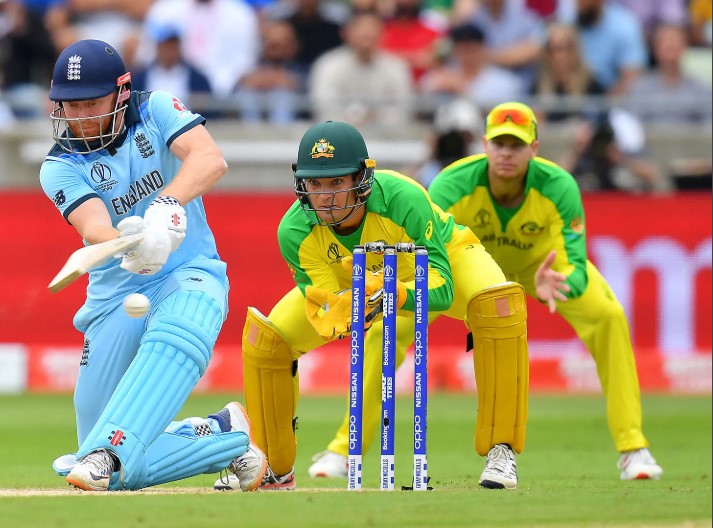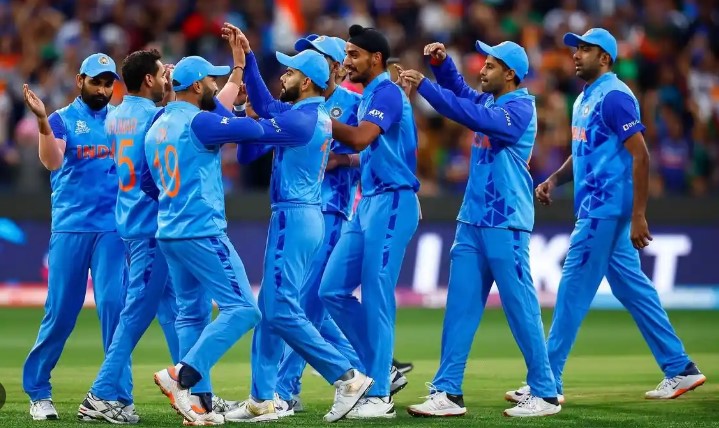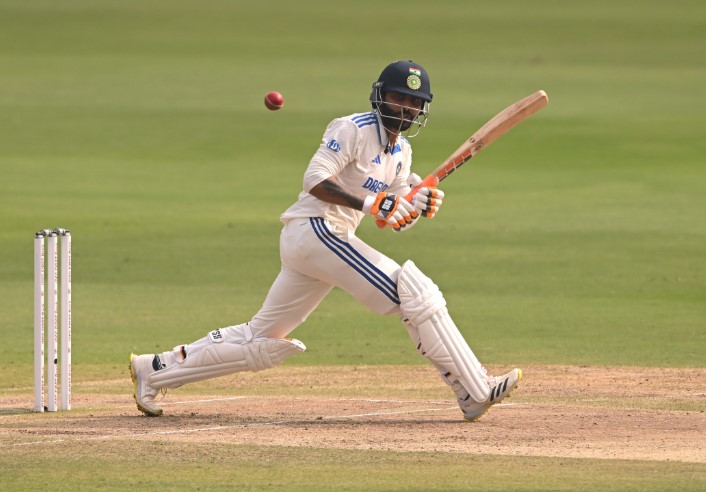Strike Rate: Cricket is a game filled with nuanced statistics that provide a deeper understanding of a player’s performance. Among these metrics, one of the most talked-about and critical statistics is SR. Whether it is for a batsman or a bowler, the strike rate plays a pivotal role in evaluating the effectiveness of a player. In this article, we will focus on the meaning of SR in cricket, its calculation, importance, and how it is used to analyze a player’s impact in a match. We will also explore its relevance across various formats of the game and give examples of players who have excelled in their respective strike rates.
What Is SR In Cricket?

In cricket, SR refers to the rate at which a player achieves a particular action in the game. The term “strike rate” is used for both batsmen and bowlers, but the calculation and significance are different in each case.
Batsman’s SR:
A batsman’s SR measures how quickly they score runs. It is a statistic used in limited-overs formats like One-Day Internationals (ODIs) and Twenty20 (T20) matches. For a batsman, the SR shows how many runs they score per 100 balls faced. The higher the SR, the quicker the batsman is at accumulating runs, which is crucial in shorter formats where quick scoring is necessary.
The formula for calculating a batsman’s SR is:
SR=Balls Faced/Runs Scored×100
For example, if a batsman scores 40 runs from 30 balls, the SR would be:
SR=30/40×100=133.33
This means the batsman scores 133.33 runs per 100 balls.
Bowler’s SR:
A bowler’s SR measures how often they take wickets. It is defined as the number of balls a bowler takes to dismiss a batsman. A low strike rate for a bowler is considered good because it indicates that the bowler takes wickets quickly. The formula for calculating a bowler’s strike rate is:
Bowler’s SR=Wickets Taken/Balls Bowled
For example, if a bowler has bowled 300 balls and taken 15 wickets, their SR would be:
SR=15/300=20
This means the bowler takes a wicket every 20 balls.
Why Is SR Important In Cricket?

The SR is a vital statistic in cricket because it reflects the player’s ability to perform effectively and efficiently. Here’s why SR is crucial for both batsmen and bowlers:
1. For Batsmen:
Aggression and Tempo: In shorter formats like T20 and ODI, the game revolves around maintaining a high run rate. A high SR indicates a batsman’s ability to score quickly and put pressure on the opposition.
Chasing and Setting Targets: When a team is chasing a target or setting one, batsmen with high SR can accelerate the scoring, ensuring their team stays ahead in the game.
Match Situations: The SR is also important in different match situations. A quick-striking batsman can capitalize on the final overs to get quick runs, while in the middle overs, maintaining a balance between building innings and accelerating is crucial.
2. For Bowlers:
Wicket-taking Ability: A low SR for a bowler means they are effective at taking wickets at regular intervals, which can break partnerships and keep the batsmen under constant pressure.
Pressure in Key Moments: Bowlers who strike frequently, especially in critical moments of a match, can change the momentum of the game. A low SR is often a sign of a bowler’s ability to keep the batting side on the back foot.
Team Strategy: Teams rely on bowlers with low SR to ensure they get wickets frequently. This is especially important in formats like T20, where wickets are a key part of restricting the opposition.
SR Across Different Formats

The concept of SR holds different levels of importance in various formats. A batsman or bowler’s SR is more critical in limited-overs formats, where the objective is to maximize runs or wickets within a set number of overs. Let’s compare SR across formats:
| Format | Average Batsman SR | Average Bowler SR | Key Features |
|---|---|---|---|
| Test Cricket | 40-55 | 55-65 | Longer innings, more focus on building runs and bowling spells. |
| ODI Cricket | 80-90 | 30-35 | Faster-paced, but still allows time for building innings and taking wickets. |
| T20 Cricket | 130-160 | 18-22 | Aggressive play is crucial for both batsmen and bowlers. Fast scoring or quick wickets are key to success. |
Batsman’s SR In Different Formats:
In Test cricket, where innings last longer, batsmen are more focused on building partnerships and accumulating runs. As such, their SR is lower compared to limited-overs formats.
In ODIs, the SR becomes more important, especially as teams aim to accelerate the scoring in the middle and final overs. A batsman’s ability to strike quickly without losing their wicket becomes crucial for the team’s success.
In T20 cricket, where each team is only allowed 20 overs, a high SR is the most important attribute. Batsmen must score quickly from the outset, and those who can maintain a SR of 130 or higher are considered to be match-winners.
Bowler’s SR In Different Formats:
For bowlers, Test cricket typically results in a higher SR since bowlers bowl longer spells and have fewer opportunities to take wickets. The SR is often influenced by conditions such as pitch and weather.
In ODIs, bowlers need to take wickets in the middle overs, and thus, a lower SR is desirable. Quick wickets can help stem the flow of runs, while a bowler who can take wickets regularly becomes a key player in the team.
In T20 cricket, bowlers are expected to take wickets quickly to break partnerships and halt the opposition’s momentum. Therefore, having a low SR (taking wickets frequently) is highly valued.
Factors Affecting The SR

Several factors can influence a player’s strike rate, including:
Batting Style (for Batsmen): Aggressive players like Chris Gayle or AB de Villiers naturally have higher strike rates due to their attacking nature. In contrast, players like Cheteshwar Pujara or Alastair Cook have lower strike rates, focusing on building innings and providing stability.
Bowling Style (for Bowlers): Fast bowlers tend to have lower strike rates than spinners because they can generate pace and movement to dismiss batsmen quickly. Spinners generally take longer to get wickets, leading to a higher strike rate.
Pitch Conditions: A batsman’s or bowler’s strike rate can be affected by pitch conditions. On flat pitches, batsmen tend to score faster, while bowlers may struggle to take wickets. Conversely, on bowler-friendly pitches, bowlers might enjoy a better strike rate.
Match Situation: The match situation influences a player’s strike rate. In chasing a high total, a batsman will need to score faster, whereas in a low-scoring game, the focus might be on building partnerships and maintaining a steady flow of runs.
Opposition Quality: The quality of the opposition also plays a role. A player might have a higher strike rate against weaker teams and a lower one against stronger teams.
Notable Players With Exceptional Strike Rates
Several players have established themselves as masters of maintaining excellent strike rates across various formats. Let’s take a look at a few:
| Player | Format | Strike Rate | Key Strengths |
|---|---|---|---|
| Chris Gayle | T20 | 146.5 | Powerful hitting, boundary clearance. |
| AB de Villiers | ODI/T20 | 101.1 | Innovative shot-making and versatility. |
| Shahid Afridi | ODI/T20 | 117.0 | Aggressive batting, match-winning ability. |
| Jos Buttler | T20/ODI | 142.2 | Quick acceleration in the final overs. |
| David Warner | T20 | 140.0 | Consistent and aggressive play from the start. |
These players are known for their aggressive approach to batting, and their strike rates are consistently among the highest in their respective formats. Their ability to score quickly often turns the match in their team’s favor.

The strike rate in cricket is one of the most critical statistics that define a player’s approach and effectiveness, especially in the shorter formats of the game. Whether you are looking at a batsman’s ability to score rapidly or a bowler’s capacity to take wickets regularly, the strike rate offers valuable insights into their performance.
While a high strike rate is essential in limited-overs cricket, the strategy behind it is just as important. A player’s strike rate is shaped by various factors such as playing style, opposition quality, and match situation. By understanding how strike rates work and what they reveal about a player’s role, we can appreciate the impact they have on a game and the strategies used to maintain a high strike rate.
